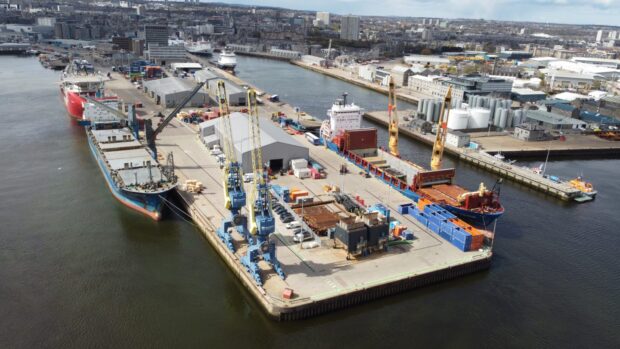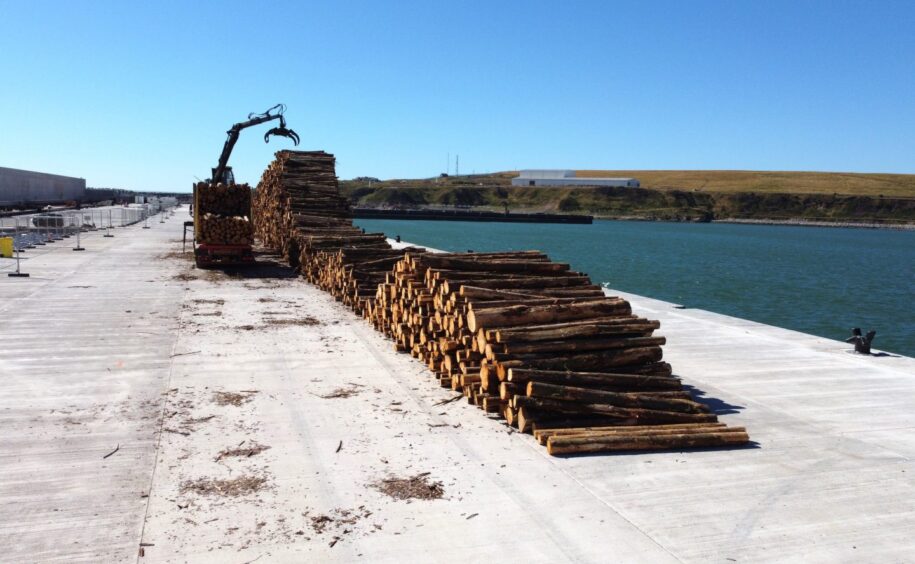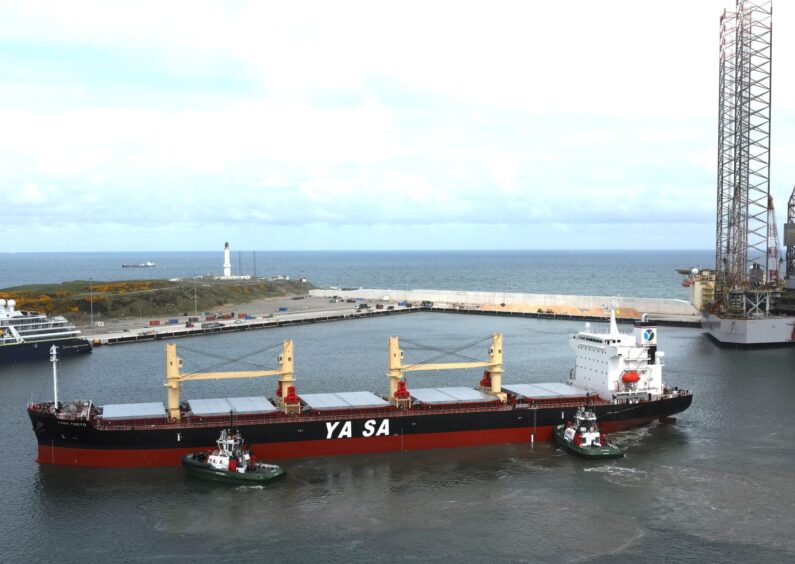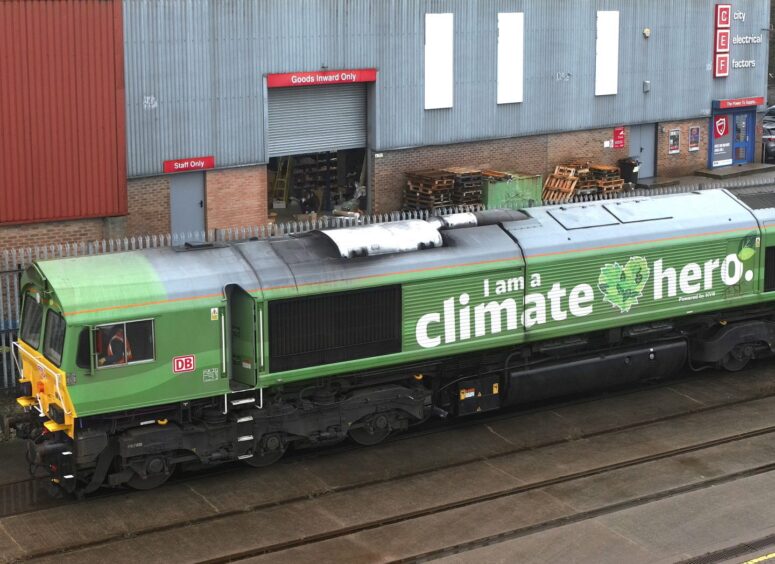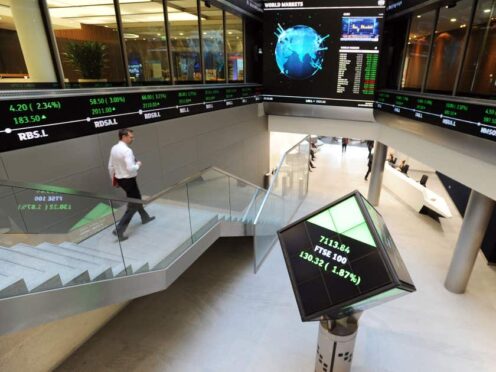Port of Aberdeen, the UK’s oldest business with the country’s newest harbour, is a global gateway for trade, facilitating connections between local businesses in the north-east of Scotland and over 40 countries spanning Europe, Africa, Asia, and beyond.
-
Some Press and Journal online content is funded by outside parties. The revenue from this helps to sustain our independent news gathering. You will always know if you are reading paid-for material as it will be clearly labelled as “Partnership” on the site and on social media channels.
This can take two different forms.
“Presented by”
This means the content has been paid for and produced by the named advertiser.
“In partnership with”
This means the content has been paid for and approved by the named advertiser but written and edited by our own commercial content team.
More than 7,000 vessels carrying over 3 million tonnes of goods utilised Port of Aberdeen in 2023. The port’s new £420m Aberdeen South Harbour has transformed the variety and volume of cargo the port can handle and is already opening up opportunities for new business and future growth.
UK’s oldest business with the newest harbour
With South Harbour complete, the port now offers 7,600m of quayside for vessels 300m+ long, and over 690,000sqm of flexible laydown areas. Additionally, the port offers deepwater berths to a maximum depth of -14.8m (mean high water springs) and ultra heavy lift capacity up to 140 tonnes / sqm
The enhanced capacity has unlocked significant growth in timber exports, soaring from around 7,000 tonnes in 2022 to 150,000 tonnes in 2023. The expansive laydown space enables timber to be chipped on the quayside then loaded directly onto the vessel for export, improving safety and efficiency by removing the need to double-handle goods. The expanded port also now serves as a transhipment hub for pipe shipments originating from locations as far as Japan, that were previously routed to Norway.
The port’s enhanced capacity is complemented by a focus on faster clearance processes and strategic multi-modal connections, ensuring streamlined logistics operations for the safe, efficient, and cost-effective flow of goods. The port’s commitment to providing flexible and customer-centric solutions further enhances its ability to meet diverse cargo requirements.
Growth opportunities for the north-east
Port of Aberdeen’s exceptional transport links not only support diverse import cargos, including dry and wet bulks, and consumer goods, but also offer significant export opportunities for local businesses, from oil related fuels to food and beverage, and textiles.
The Serco NorthLink freight ferry service plays a pivotal role in accommodating a wide array of cargo needs for destinations including the Northern Isles. Its daily operations encompass the transportation of diverse items such as containers, lift-on/lift-off cargo, livestock, temperature-controlled foodstuffs, unaccompanied vehicles, dangerous goods, and oversized loads.
Additionally, the Sea-Cargo ferry service establishes vital connections between Aberdeen, Norway, and Continental Europe through its twice-weekly roll-on/roll-off liner service. This strategic link ensures efficient, low-risk export solutions with competitive rates and expedited transit times. By facilitating regional connectivity and enhancing local trade prospects, these services within the port directly benefit North East businesses, enabling them to access broader markets and expand their reach.
Reducing congestion and emissions
Heavy goods vehicles (HGVs) transport the vast majority of goods for the north-east of Scotland, often trucked the length of the country from major English container ports. Port of Aberdeen is exploring opportunities to move freight from road to rail to reduce congestion and emissions on the roads.
The port, alongside numerous industry partners, recently concluded a successful trial of a cargo train project that transported goods directly from Teesside to the port using a train powered by low carbon fuel, as opposed to the conventional HGV route. This initiative has the potential to establish a regular train service to Aberdeen and reduce the carbon footprint linked to these logistics operations.
Longer term, the establishment of containerised cargo handling would increase the potential for a ‘coaster’ container ship making a regular stop in Port of Aberdeen, along with other north-east ports, opening multiple import and export opportunities.
Disrupting established HGV routes is challenging and requires private and public sector collaboration to seize the opportunity that could deliver significant environmental and efficiency benefits.
Future prosperity for local businesses
The steps taken by Port of Aberdeen opens up the North East of Scotland to a world of trade possibilities and will pave the way for the growth of the local and national economies. With more goods coming in and out of the port, and with the potential for additional vessel routes, local businesses have a viable export path to further their commercial goals.
Learn more at Port of Aberdeen’s website.
